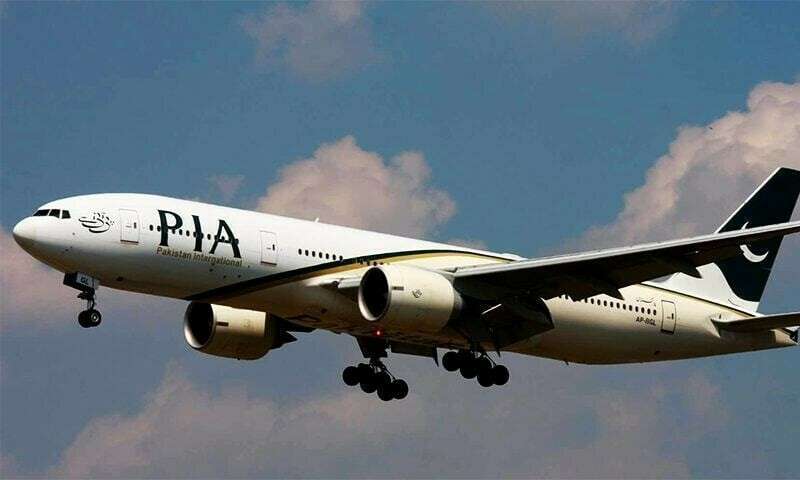Introduction: A New Era for Pakistan International Airlines
Pakistan International Airlines (PIA) is on the cusp of reviving its operations to Europe, a significant milestone in the airline’s recovery and growth strategy. After a prolonged suspension of operations in Europe, the airline is now eyeing the resumption of services to several key destinations, particularly in the UK. This comes after the European Union Aviation Safety Agency (EASA) lifted its ban, which had been in place since June 2020.
The suspension followed concerns about PIA’s compliance with international aviation standards, compounded by the tragic crash of a PIA flight that led to the investigation of pilot license authenticity in Pakistan. The European regulatory body had suspended PIA’s authorization to fly within the EU due to issues with the Pakistan Civil Aviation Authority (PCAA) ensuring consistent adherence to safety norms.
As PIA braces to re-enter the European market, it faces an essential challenge: meeting the high standards of international aviation regulators while positioning itself for growth amid the complexities of privatization and competition from global aviation giants.
The Road to Reinstatement: Overcoming Regulatory Hurdles
EU Ban and Its Impact on PIA
In June 2020, EASA suspended Pakistan International Airlines’ authorization to operate in the European Union. The suspension was a direct response to concerns about the safety and security of the airline’s operations, following an investigation into the validity of pilots’ licenses. The investigation was sparked by a tragic plane crash that claimed the lives of 97 passengers in May 2020.
The investigation revealed serious issues within Pakistan’s aviation sector, including discrepancies in the training and qualification of pilots. As a result, EASA suspended PIA’s license to operate in EU airspace. This ban was a significant blow to PIA, as it lost access to a lucrative market, resulting in an estimated annual revenue loss of 40 billion rupees (around $144 million).
The Role of the UK’s Department for Transport (DfT)
Following the lifting of the EASA ban, PIA plans to approach the UK’s Department for Transport (DfT) to seek permission for flights to the UK. The approval from EASA is considered a prerequisite for the resumption of operations in the UK, as the UK follows similar safety protocols to those of the European Union.
Abdullah Hafeez Khan, a spokesman for PIA, stated that the airline was confident of obtaining approval from both the EU and UK authorities, paving the way for flights to key destinations such as London, Manchester, and Birmingham.
PIA’s Ambitious European Expansion Plans
The Timeline for Resumption
Khan revealed that PIA is optimistic about resuming its operations to Europe within the next three to four weeks. Paris is expected to be the first European city to welcome PIA flights after the hiatus, marking the beginning of a new chapter for the airline in Europe. Once the initial route to Paris is launched, the airline plans to gradually expand its services to other European destinations, offering passengers greater connectivity and choices.
Focus on UK Routes
The UK has always been a vital market for PIA due to the large number of Pakistanis living in the country. With the UK’s Department for Transport (DfT) expected to review PIA’s application soon, the airline is eagerly anticipating the green light to restart flights to London, Manchester, and Birmingham. These cities are among the most sought-after destinations for PIA’s travelers, and their resumption will significantly contribute to the airline’s financial recovery.
The Financial Implications of the EU and UK Market Resumption
Revenue Boost from European and UK Routes
The resumption of European and UK routes is expected to provide a significant boost to PIA’s revenue streams. The airline has faced a severe revenue decline due to the European ban, which cost it billions of rupees annually. With the revival of these markets, PIA is poised to recover some of its lost revenue, contributing to the airline’s ongoing efforts to stabilize its financial position.
Additionally, the increased flight frequency to Europe and the UK will help the airline tap into new passenger markets, especially business and leisure travelers, and further strengthen its network of international destinations.
Strategic Focus on Privatization
PIA’s privatization process, aimed at selling a 60 percent stake in the airline, has faced numerous challenges. The airline’s management has been working diligently to revitalize the carrier’s value, especially with the resumption of European and UK flights. PIA officials are optimistic that the reinstatement of these routes will increase the airline’s value and make it a more attractive investment opportunity for potential buyers.
Khan emphasized that the airline has sufficient cash flow to expand its operations by adding new routes. However, the decision to lease new aircraft will depend on the government finalizing the privatization discussions. The government’s goal is to ensure that the airline is financially viable and competitive enough to attract private investors.
PIA’s Position in the Domestic and Global Aviation Market
Domestic Market Share and Competition
Currently, PIA holds a 23 percent market share in Pakistan’s domestic aviation sector. However, the airline faces stiff competition from Middle Eastern carriers, which control a significant portion of the market. These airlines benefit from superior connectivity, state-of-the-art aircraft, and better frequency of flights to international destinations.
Despite PIA’s challenges, the airline has established agreements with 87 countries, securing vital landing slots at international airports. This global presence gives the airline a competitive advantage, particularly as it resumes operations in Europe and the UK.
Fleet and Aircraft Leasing Considerations
PIA’s current fleet consists of 34 aircraft, which is insufficient to meet the demand from both domestic and international markets. The airline’s limited fleet capacity has hindered its ability to compete with larger Middle Eastern airlines. PIA’s management is exploring options for leasing new aircraft once the privatization discussions are finalized. This will enable the airline to better serve international routes, particularly as it works to restore its European and UK services.
PIA’s Future Prospects: Challenges and Opportunities
The Privatization Roadblock
The government’s attempt to privatize PIA has faced numerous setbacks, including receiving only one offer that was well below its asking price. However, the airline remains optimistic that the resumption of international routes will increase its value and attract better offers from potential buyers. If successful, privatization could lead to improved financial stability and operational efficiency, allowing PIA to compete more effectively in the global aviation market.
Safety and Regulatory Compliance
As PIA seeks to expand its international operations, it will need to continue demonstrating its commitment to safety and regulatory compliance. The airline must adhere to stringent international standards, particularly those set by EASA and the UK’s Department for Transport. Meeting these standards is crucial for restoring public confidence and ensuring long-term success in international markets.
Embracing Technological Innovations
To stay competitive, PIA will need to embrace technological innovations in aviation. This includes adopting more fuel-efficient aircraft, enhancing customer service, and improving operational efficiency through digitalization. By modernizing its operations, PIA can attract more passengers and strengthen its position in the global aviation landscape.
Conclusion: A Bright Future for PIA?
The lifting of the EU ban marks a crucial turning point for Pakistan International Airlines. With plans to resume flights to Europe and the UK, PIA is positioning itself for a strong recovery and renewed growth. The airline’s financial recovery, combined with its ongoing privatization process, offers a glimmer of hope for its long-term survival and success in the competitive global aviation industry.
Despite facing numerous challenges, PIA’s management remains optimistic about its future prospects. By focusing on safety, regulatory compliance, and market expansion, PIA can rebuild its reputation and become a major player in the international aviation sector once again.
FAQs
1. Why was PIA banned from operating in the EU?
PIA’s authorization to operate in the EU was suspended by EASA in 2020 due to concerns over the safety of its operations, particularly following an investigation into the authenticity of pilot licenses.
2. When will PIA resume flights to the UK and Europe?
PIA plans to resume its flights to Europe, starting with Paris, in the next three to four weeks. Once the necessary approvals are obtained, UK routes to cities like London, Manchester, and Birmingham will follow.
3. How will the lifting of the ban impact PIA’s financials?
The lifting of the EU ban is expected to provide a significant revenue boost, allowing PIA to recover some of the lost income from European and UK routes, which had previously been suspended.
4. What are the challenges PIA faces in privatization?
PIA has faced difficulties in privatizing the airline, with only one offer received, which was far below expectations. However, the resumption of international flights is expected to enhance the airline’s value and attract better offers.
5. What does PIA’s future look like after the ban is lifted?
With the lifting of the EU ban and the potential resumption of flights to Europe and the UK, PIA is poised for growth. The airline’s management aims to improve its financial position, expand its fleet, and regain its competitive edge in the global aviation market.
ALSO READ:
https://flarenews.pk/2024/12/01/vpn-ban-delayed-pta-grants-extension-without-new-deadline/



